Table of contents
Related articles
Introduction
Operators help make simple and complex filters in order to provide more flexibility to the user in the data exploitation and in the creation of personalized list. It is possible to combine multiple operators on one or more fields.
List of operators
-
Equal (Not equal)
Allows to filter on one or more words contained in the field of the records to display, as opposed to Not Equal to that filters on what is not equal to the value.
- Applicable to the following field types:
-
Text (subject, name, description, note, etc.)
-
Numeric (numbers, amounts. etc.)
-
Reference ( sites, departments, categories)
-
Checkbox
-
Date
-
-
Example of Equal:

- Example of Not equal:
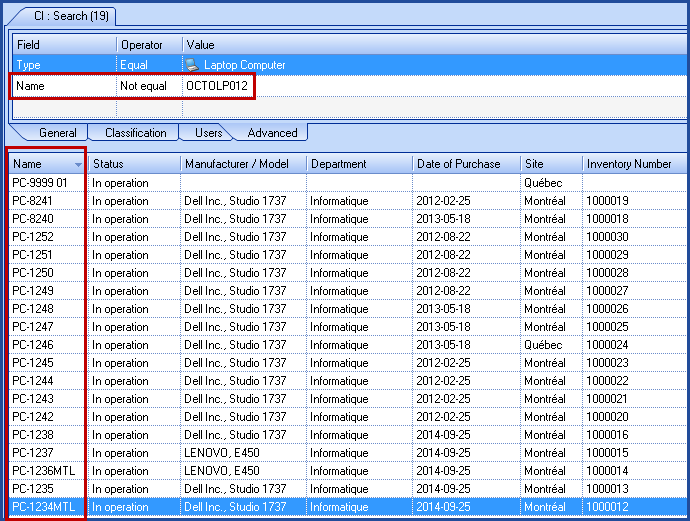
- Example of equal with a checkbox :
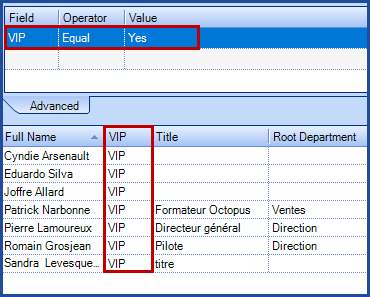
When performing a search on a checkbox type field, the field value is Yes when the box is checked and No when unchecked.
-
Begins with (Does not begin with)
Allows to filter on the first word of a field, as opposed to Does not begin with that filters on everything that does not start with the specified value.
- Applicable only to the following field types:
-
Text (subject, name, description, note, etc.)
-
-
Example of Begins with:
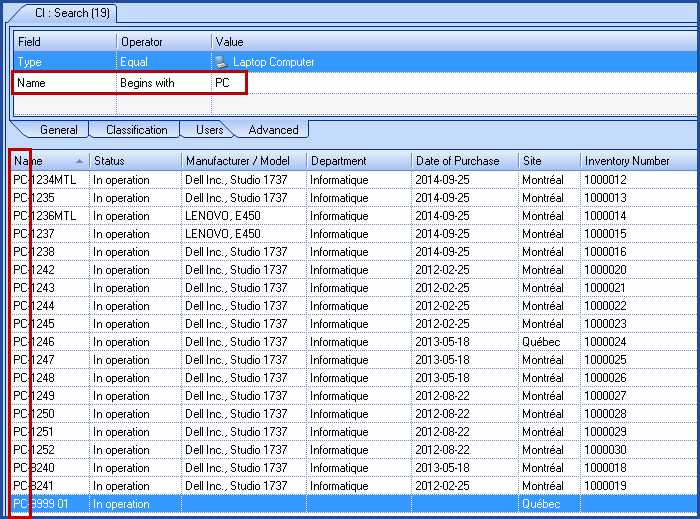
Example of Does not begin with:
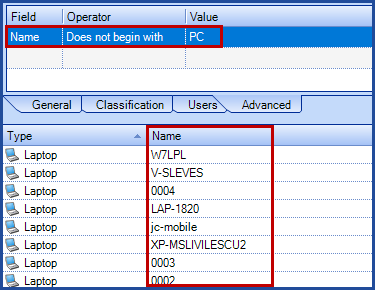
-
Ends with (Does not end with)
Allows to filter on the end of a field, as opposed to Does not end with that filters on fields that do not end with the specified value.
- Applicable only for the following field types:
-
Text (subject, description, note, etc.)
-
-
Example of Ends with:

- Example Does not end with:
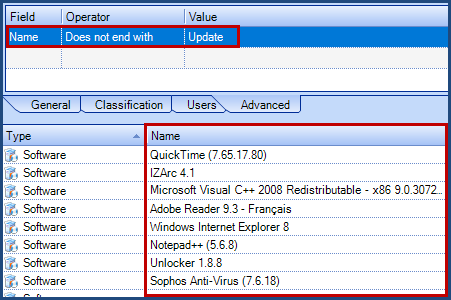
-
Contains (Does not contain)
Allows to filter on one or more words that contain the value regardless of its position or order, as opposed to the Does not contain operator that filters fields where the value is not contained.
- Applicable only for the following field types:
- Text (subject, name, description, note, etc.)
- Example of Contains:

Example of Does not contain:

-
Contains exactly ( Does not contain exactly)
Allows to filter on one or more words in a field containing exactly the value, regardless of its position or order, as opposed to Does not contain exactly filters fields that do not match exactly the valued specified.
- Applicable only for the following field types:
-
Text (Subject, name, description, note, etc.)
-
-
Example of Contains exactly:
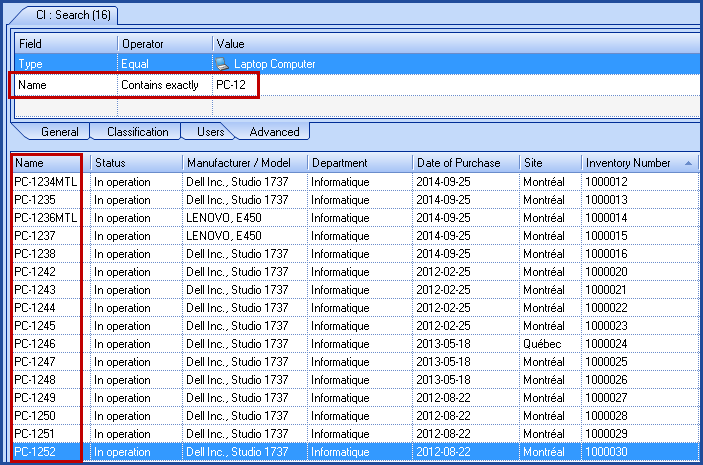
- Example of Does not contain exactly:

-
Is empty (Is not empty)
Allows to filter on fields that are empty, as opposed to Is not empty will filter fields where the value is not empty.
- Applicable only to the following field types:
-
Text (subject, name, description, note, etc.)
-
Numeric (numbers, amounts, effort, etc.)
-
Reference ( sites, departments, categories, etc.)
-
Date
-
-
Example of Is empty:

- Example of Is not empty:
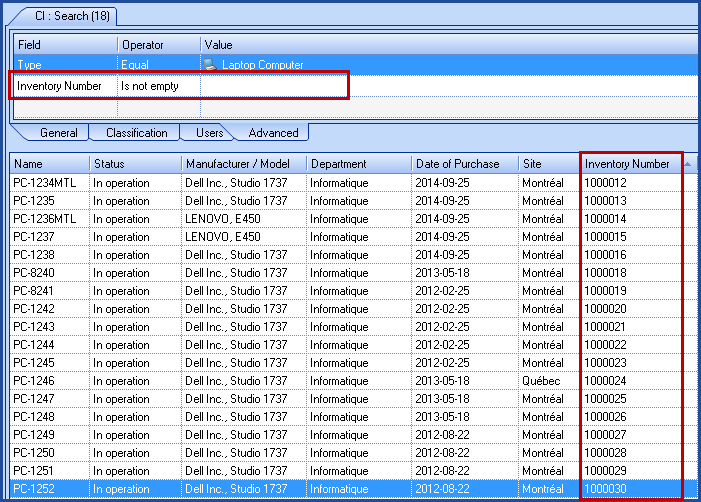
-
Greater or equal than (Lower or equal than)
Allows to filter on fields that are greater or equal to a given number or date, as opposed to Lower or equal than a number or date.
- Applicable to the following field types:
-
Numeric (Numbers, cost, effort, etc.)
-
Date
-
-
Example of Greater or equal than:
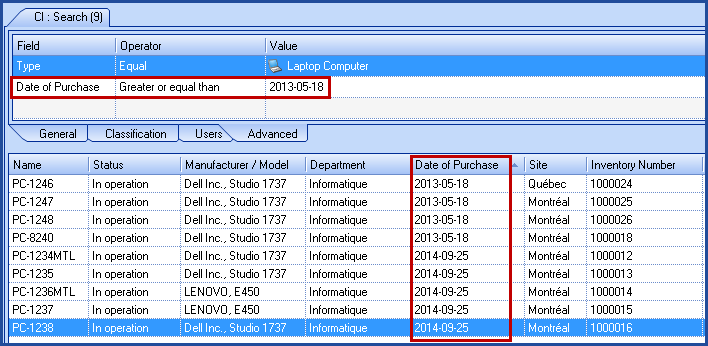
- Example of Lower or equal than:
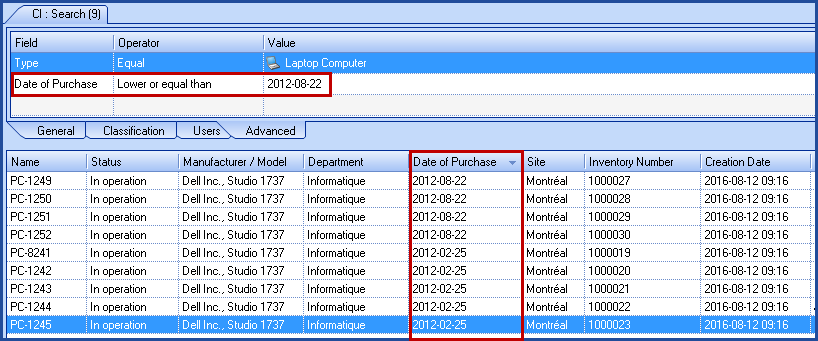
-
Greater than (Lower than)
Allows to filter on fields that are greater than a specified number or date, as opposed to Lower than a specified number or date.
- Applicable to the following field types:
-
Numeric (number, cost, , le nom, la description, la note, etc.)
-
Date
-
-
Example of Greater than:
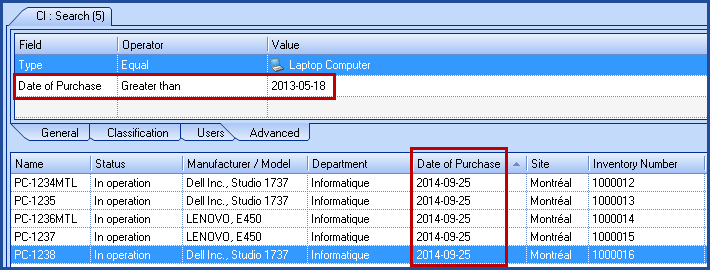
-
Example of Lower than:
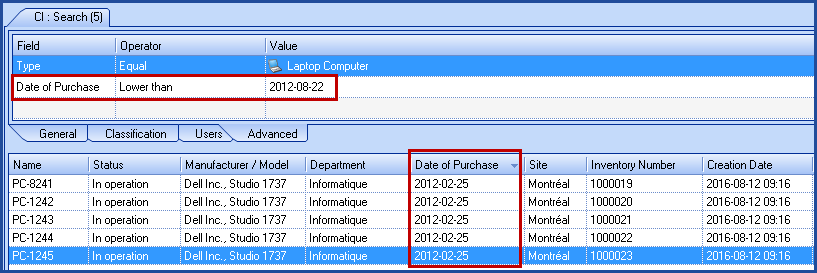
-
Between (Not between)
Allows to filter on dates included in an interval, as opposed to Not between that filters on dates not included in the inverval.
- Applicable to the following field type:
- Date
- Example of Between:
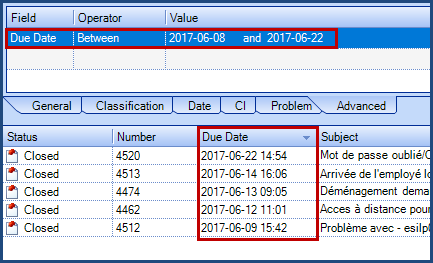
- Example of Not between:
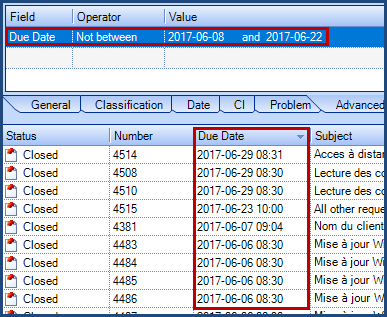
Examples
-
Text Field Type
A team of biomedical engineers want to identify only requests for which the answer in the form to Urgent is "No".
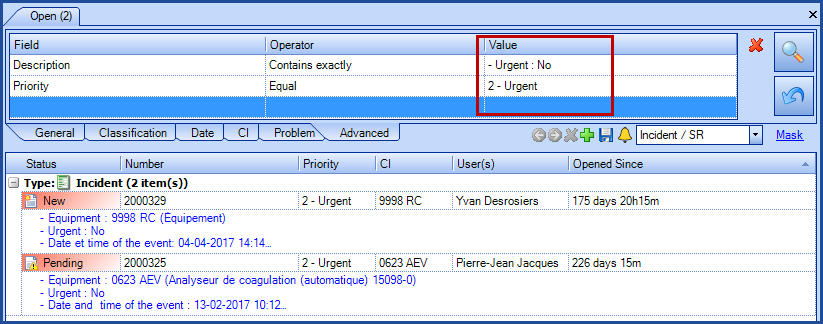
An IT team, during the incident management process wants to identify in the description, incidents for which the answer in the form to clinical application is "Autre" to allow them to find information which will help them resolve an incident.

-
Number Field Type
In the problem or asset management, we could easily obtain the number of incidents by CI and filter those that required an effort greater or equal than a specific amount.
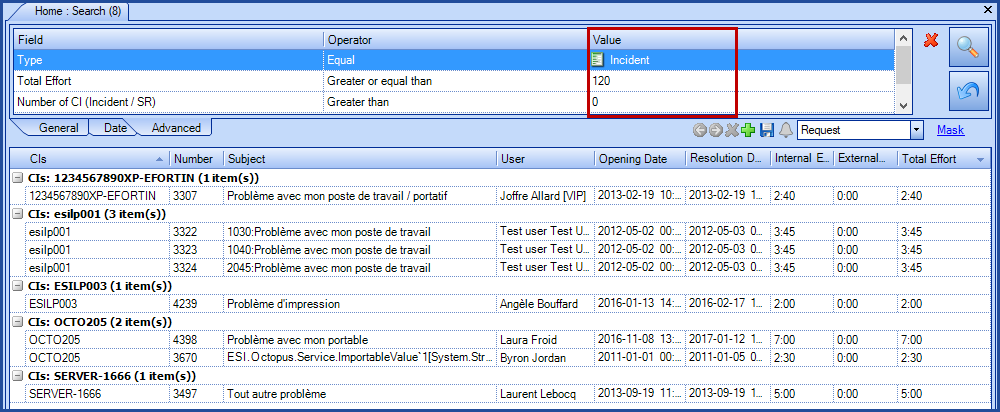
-
Reference Field Type
Reference filed types are fields that come from tables or reference data like sites, departments, categories, etc.
During the impact analysis of a change or maintenance, we could easily identify equipment impacted using this type of operator.
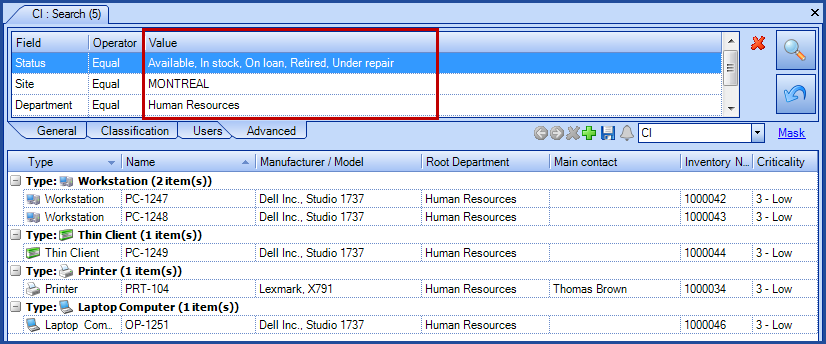
-
Date Field Type
It is possible to do multiple searches using dates, including predetermined periods.
For example: Obtain the number of active incidents opened in the last 90 days.
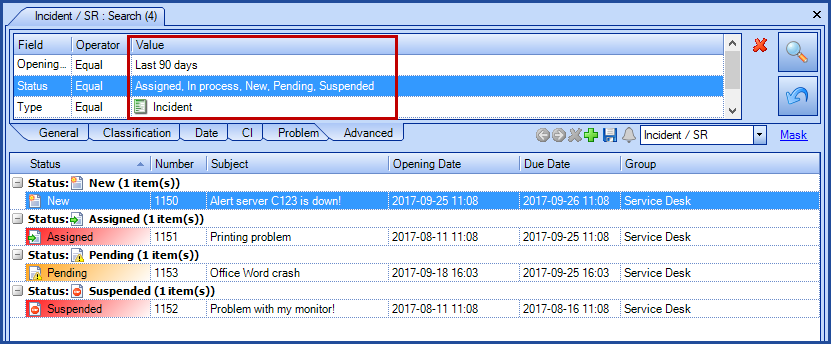
For example: During budget planning or asset management of servers identify those which warranty will expire in the current year.
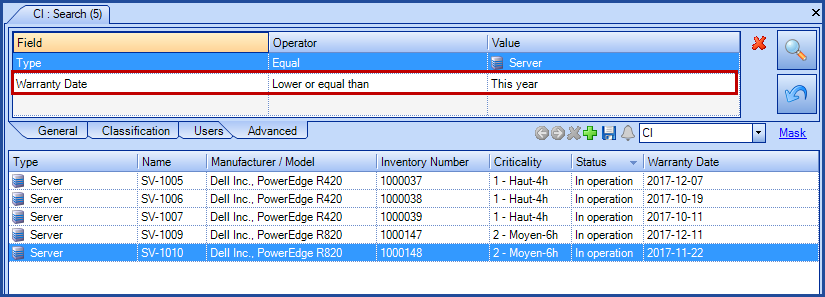
Text field search in CI's
* Important to know, no matter which operator is used, this search will be performed on the following fields:
- Name
- Note
- Serial number
- Inventory number
- Under the tab Costs :
- Purchase order
- Invoice number
- All attributes
- CI document, if this CI type is a document
Thank you, your message has been sent.
